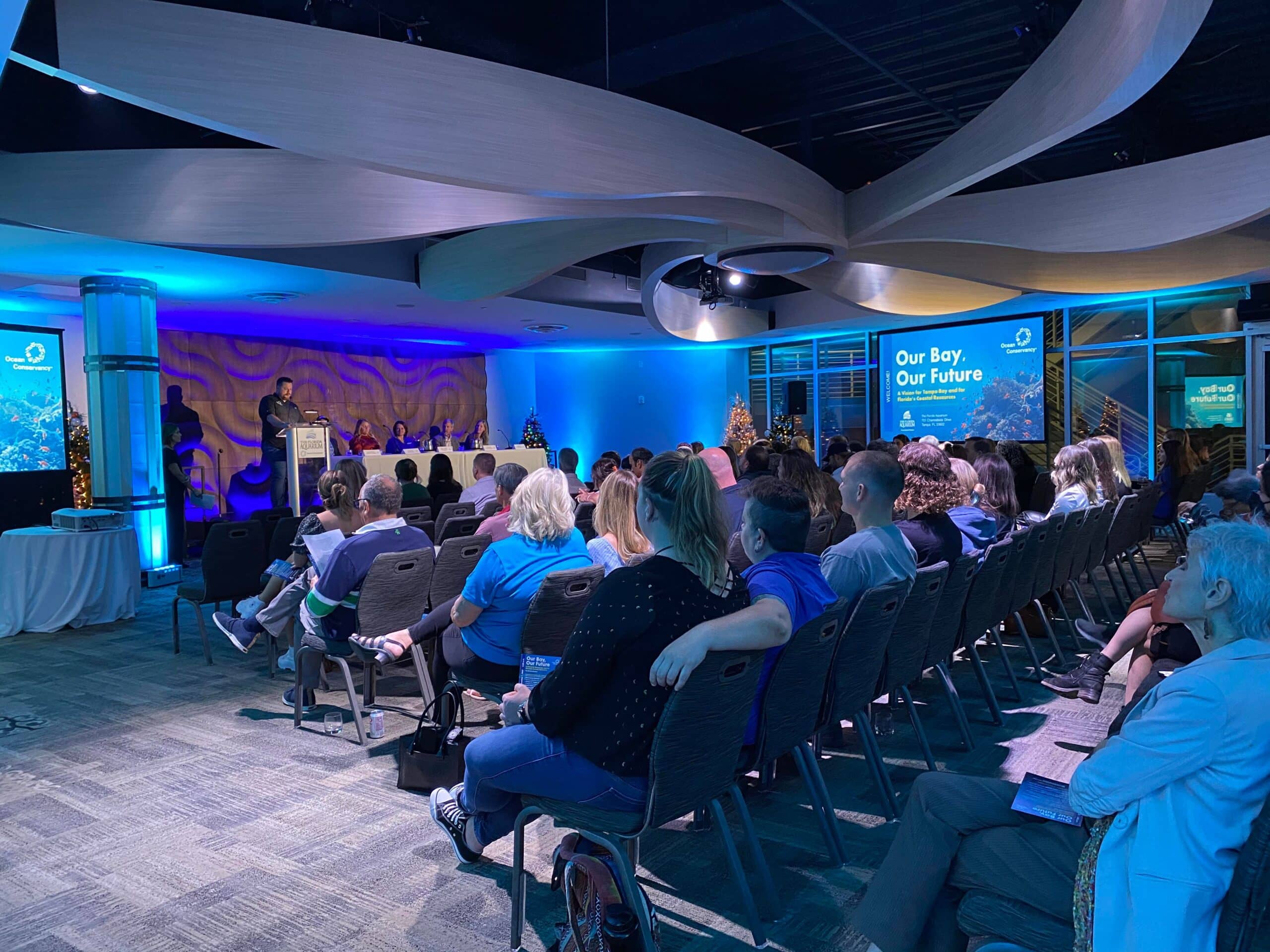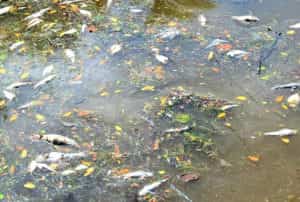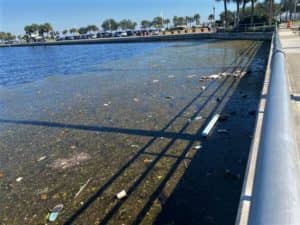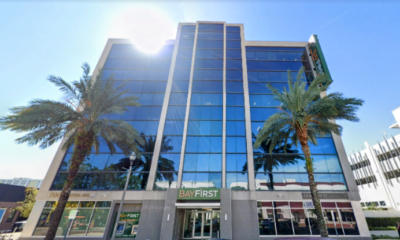Thrive
Marine scientists weigh in on health of Tampa Bay

From toxic algae blooms to plastics contaminating the water, marine scientists are concerned about the future of Tampa Bay, but see opportunities in how the public can have a positive impact.
During the “Our Bay, Our Future” event hosted by the St. Pete-based Ocean Conservancy group at The Florida Aquarium Wednesday evening, a panel of local environmental advocates and scientists shared their insights on the health of Tampa Bay’s marine ecosystem.
The panelists included:
- Savanna Christy, executive director of Keep Florida Beautiful
- Tom Frazer, dean of the College of Marine Science at the University of South Florida
- Kate Hubbard, director of FWC Center for Red Tide Research at the Fish and Wildlife Research Institute
- Debborah Luke, senior vice president of conservation at The Florida Aquarium
- Captain Dustin Pack, the charter captain at Fly Tide Charters and board member at the nonprofit Tampa Bay Waterkeeper organization
The major takeaways from the panelists covering a range of topics:
The panel discussion was moderated by Denise Godreau, a board member of the Ocean Conservancy and an executive at the Colorado-based KSL Marketing Partners firm.
On red tide
Hubbard: There are different types of algae, which we need in the environment. Red tide, the harmful algae bloom, is here roughly 60% of the year. The first reports of red tide in Florida were recorded in the 1800s, and it is still a similar pattern to what we see today. It’s a naturally occurring event, and we can’t stop it. Old Tampa Bay sees red tide blooms every summer, which contributes to the degraded water quality and affects nutrients in the seagrass. That part of the bay has been very slow to respond to restoration efforts. In terms of the red tide organism, the more we study it, the more we see how successful it is at taking advantage of conditions and can thrive across temperatures. Red tide can be concentrated in a specific area while other areas are safe from it. We try to predict where these blooms will occur. Although it’s a natural event, we need to think about our stormwater systems and how to balance our interactions. We are going to encounter more water in the future and need to redesign our system to handle it.
RELATED: Low levels of red tide organism persist around Pinellas

The water behind Crisp Park in 2021. Photo by Mark Parker.
On pollution
Christy: We were recently on the water with Keep Tampa Bay Beautiful, our local chapter, and we were scooping everything out of the water from plastic bags to bottlecaps and a hairbrush. We know in almost all water samples, including samples of water consumed by the public, there are microplastics. The microplastics get into the bloodstream of marine life and then people consume those fish. The ramifications of pollution in our water continue to be studied and we know they contain toxins.

Pollution in the water by the Albert Whitted Airport and Municipal Marina. Photo was taken in October 2022 by Veronica Brezina.
Lake: We saw people react to a viral video of a turtle with a plastic straw lodged in its nostrils [released several years ago], and we saw people change their behaviors relatively quickly. Businesses are replacing the traditional straws, but there’s more we can do.
Regarding endangered coral life, the aquarium has been successful in taking a piece of coral and spawning it in a lab that mimics the environment found in the Florida Keys. The coral is then replanted and grows. The Florida Reef Tract is the third largest living coral barrier reef system in the world. Reefs today are suffering from the Stony Coral Tissue Loss Disease (SCTLDS) [which originated in Florida] that quickly spreads, killing coral.
RELATED: USF receives $20 million for coral, mangrove protection
On creating an impact
Pack: A long time ago, I was an auto technician and later became a fishing guide. I grew up fishing here and caught my first redfish when I was 8 years old. I went from bait fishing to fly fishing and that evolved into me having an obsession and passion for this estuary. You can find trout, tarpon among a whole gamut of species here, and I want to protect that. I live by the Hillsborough River, and it is insanely sad to see water flow into our bay from the streets during heavy rain events. I don’t have a PH college degree, but I still make an impact by educating my clients.
Frazer: We are the fishing capital, which has a roughly $10 billion economic impact on Florida with 4 million anglers, and we are home to a vibrant fishery industry. It’s an important part of our culture and heritage. We have a vested interest in making sure we sustain those industries. It’s difficult to address issues like water quality and pressure on our resources. Offshore, we have some issues with gag and red grouper, and mackerel populations from fishing and environmental conditions. We have a lot of tools in our belt to help protect spawning areas and regulate the fishing seasons, and there are some fisheries that have done an excellent job [helping repopulate fish species].
What can the public do?
- Use reusable water bottles.
- Use containers to store leftover food from restaurants versus the traditional styrofoam containers.
- Don’t dispose plastics and other hazardous materials in the water or anywhere that can flood and be carried into the water.
- Try to reduce fertilizer usage.
- Continue to educate the public on how plastics and runoff negatively impacts marine life.







